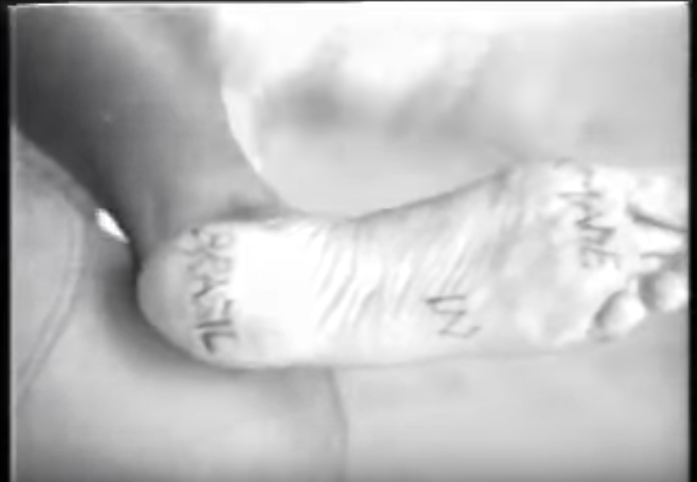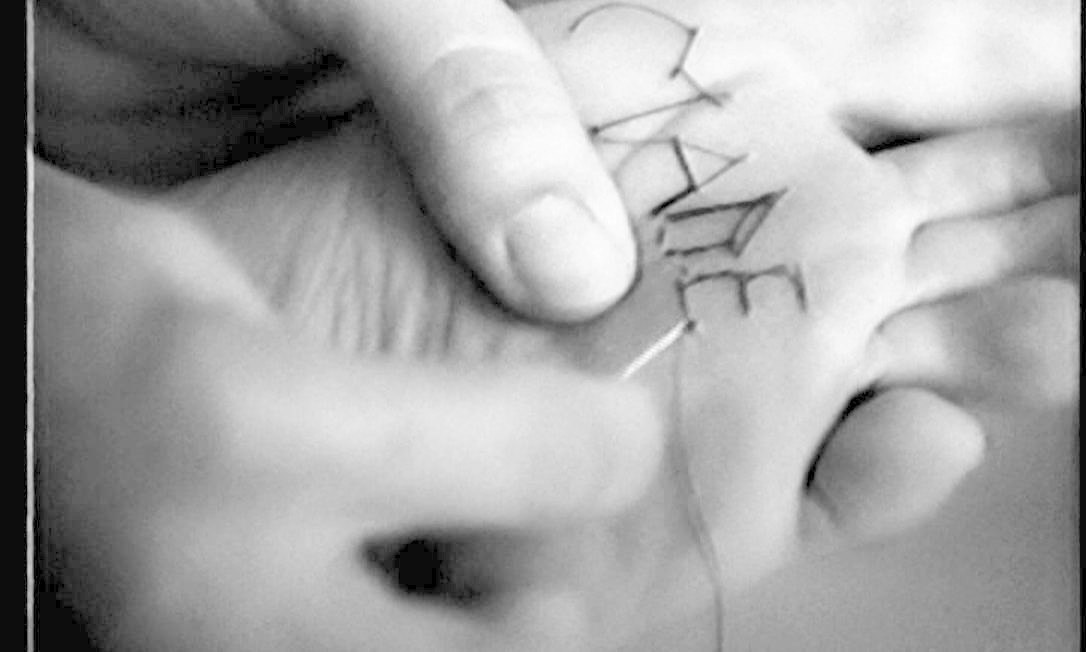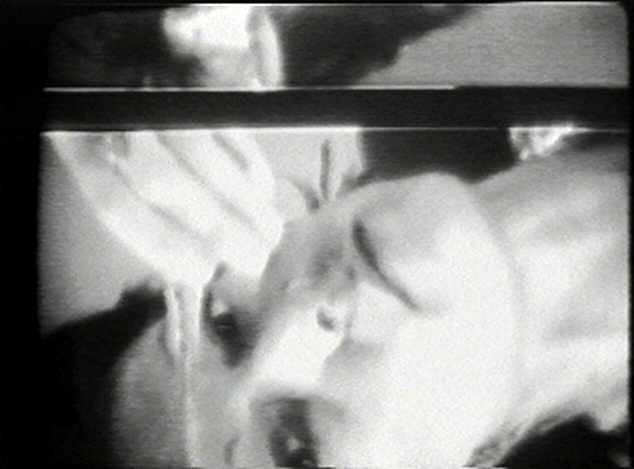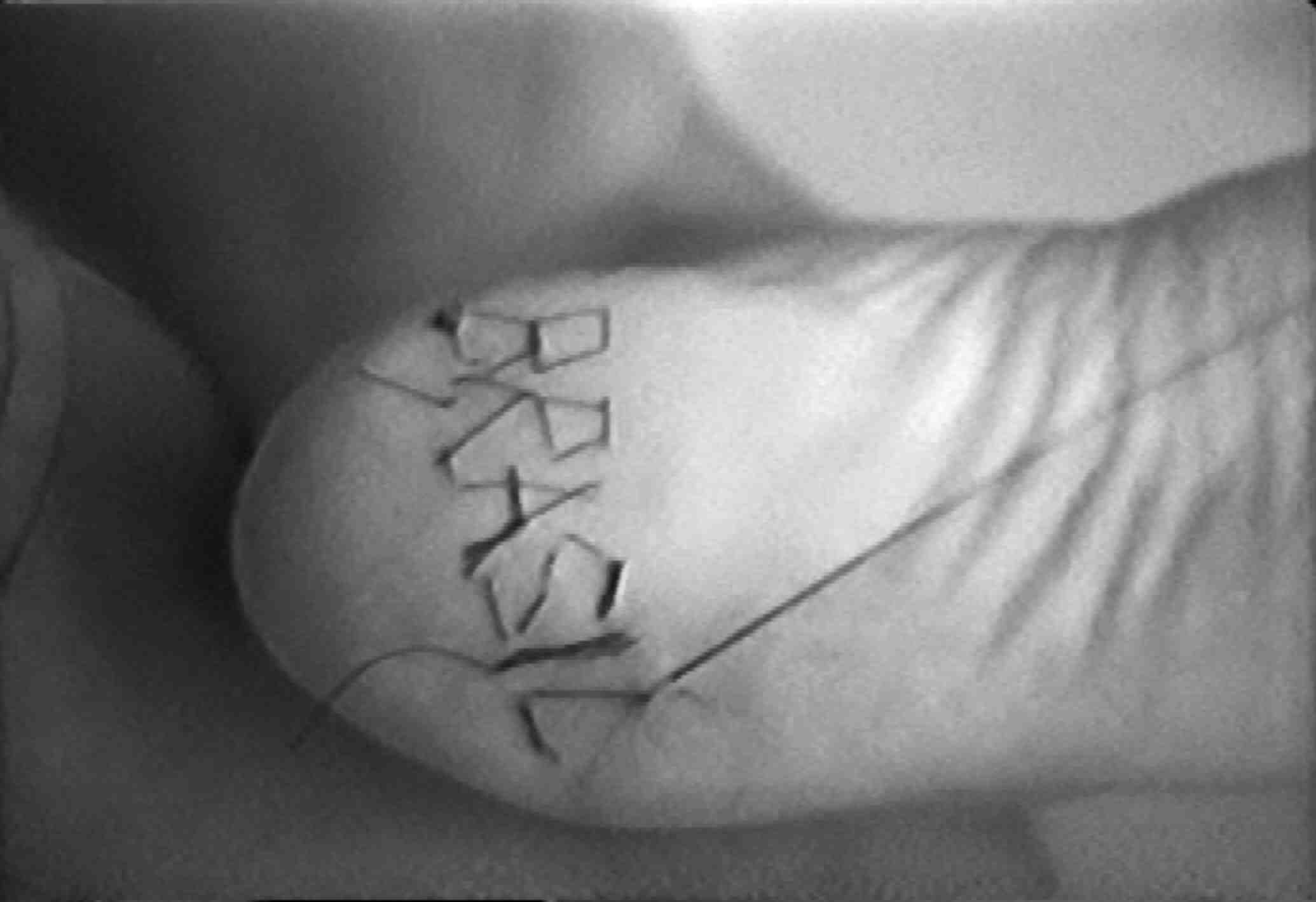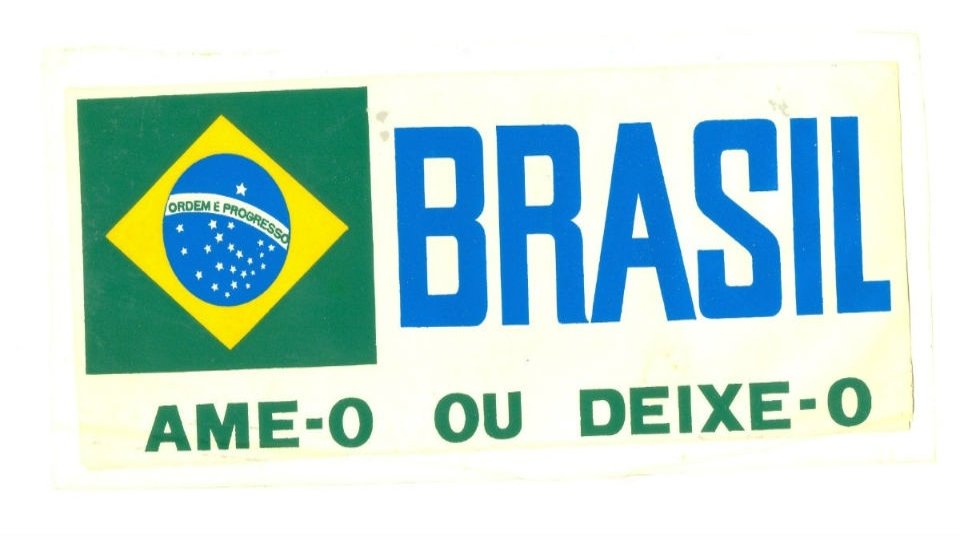Trademark
Throughout the ten-minute duration of her video Marca registrada, Brazilian artist Letícia Parente sews the sole of her foot using a needle and thread. Stitched in capital letters, she writes the sentence “Made in Brasil,” as if sewing it as a trademark (the visual symbol or text used to represent a company or a product). Marca registrada translates from Portuguese into English as Trademark. In Parente’s video, the stitched trademark represents the Brazilian origin of a product, which in this case is not imprinted onto an industrial object but rather onto the artist’s skin.
Marca registrada exemplifies the use of new media that characterizes much contemporary art, as Parente records her actions in video and uses her body as the primary material of the work. Parente created this video in 1975 with a portable camera recording in black and white. Marca registrada specifically integrates body art (in which the physical presence of the artist is the main element of the work) and video art (an artistic medium that develops over time a recorded series of images and mimics the format of television). During its entire duration, Parente’s left foot and hands are the only visible parts of her body, and spectators are directed to look attentively at the manual skills of the artist.
Pioneers of video in contemporary Brazilian art
Parente’s use of video for recording her actions was an innovative technique in the 1970s, since only a few of her peers used the medium of video as a tool for art-making. Fundamental to Parente’s artistic innovation was her relocation within Brazil. Parente was originally from Brazil’s northeastern region; she was born in Salvador and settled in the city of Fortaleza to develop her scientific career by working as a professor of chemistry. In 1969, she moved with two of her five children to Rio de Janeiro to attend graduate school and earn graduate degrees in inorganic chemistry.
It was while living in Rio that she met a group of artists who regularly used the workshop studios of the Museu de Arte Moderna and held weekly meetings as an independent artists’ group under the guidance of Anna Bella Geiger. Parente, Geiger, and others like Sonia Andrade and Ivens Machado were among the first artists in Brazil to produce and exhibit works of video art.
They usually deployed this medium to express their reflections about one’s own agency and their concerns for the limitations of civil rights, from the right to vote to the lawful application of justice. In Brazil, these artists were “pioneers of video art” because of their involvement with the medium at a time when portable video cameras were not commercially available in the country. Exhibited at the time to relatively small audiences, their work has recently been exhibited in different museums of modern and contemporary art around the world.
Made in “Brasil”
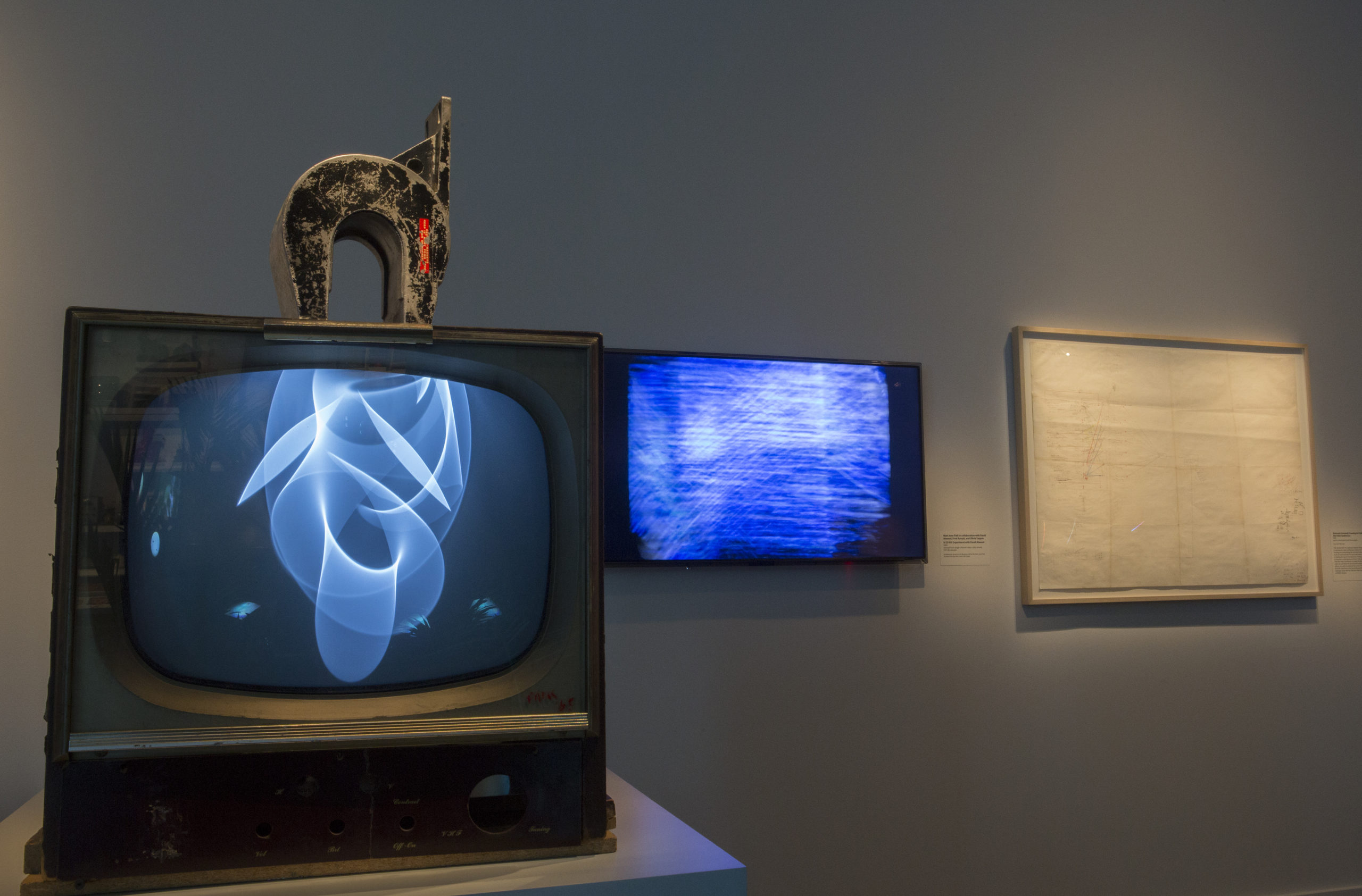
Left: Nam June Paik, Magnet TV, 1965, 17-inch television set and magnet; black and white, silent, 28 3/4 x 19 1/4 x 24 1/2 inches (Whitney Museum of American Art); Center: Nam June Paik in collaboration with David Atwood, Fred Barzyk, and Olivia Tappan, 9/23/69: Experiment with David Atwood, 1969, single-channel video; color, sound (Smithsonian American Art Museum); Right: Nam June Paik, Electronic Schematic Drawing for Paik/Abe Video Synthesizer, 1969, pencil, colored pencil and ink on paper, 30 3/4 x 43 inches (photo: Smithsonian American Art Museum, CC BY-NC-ND 2.0)
Although Parente’s Marca registrada can be compared with international, early examples of video art, her work has distinctive local characteristics. Comparable international examples to Parente’s videos are the practices of Korean artist Nam June Paik and U.S. artist Joan Jonas, both working in the U.S. However, Paik’s and Jonas’s works tend to emphasize the technological aspect of video, visible through the strategic adjustment of the image, as seen in Jonas’s Vertical Roll, and the manipulation of TV monitors, as seen in Paik’s Magnet TV.
Parente, on the other hand, does not manipulate the technological configuration of video but rather explores its conceptual possibilities. With her actions, Parente might be referring to the fact that as much as one’s own identity, as well as their nationality, can be a source of pain. She might also be referring to the impossibility of carrying, at that time, openly public discussions about the country’s socio-political situation. One of the most significant signs of the Brazilian origin in Parente’s video is the Portuguese spelling of Brazil (“Brasil”) during the last minutes of Marca registrada. Using her native language to inscribe the name of her country on the sole of her foot, Parente declares her personal identity while labeling her work: both her body and this video are made in Brazil.
Parente’s stitched statement reads both as a praise of her national and linguistic roots and as a critical response to the socio-political situation of her national context. By the time Parente created Marca registrada, Brazil’s military dictatorship (1964–85) had been in power for over a decade. This authoritarian government had closed congress and suspended civil rights, while at the same time carrying out a public campaign that promoted a positive perception of Brazil both inside and outside the country. Civil rights like suffrage (the right to vote) and habeas corpus (the right of a prisoner to appear before a judge) were suspended for ten years under a temporary constitutional amendment called Institutional Act No. 5.
Yet, the State simultaneously sponsored media advertisements seeking to foster a sense of national identity and stability. Through broadcast television, they highlighted, for example, Brazil’s victory in the 1970 World Cup and popularized the slogan “Brazil, love it or leave it.” While the content of Parente’s statement echoes these favorable campaigns popularly exalting the pride of national identification, her statement’s location on the sole of her foot also recalls forms of torture, particularly the practices that military officials used during Brazil’s dictatorship against civilians, like the application of electric shocks on the soles of the feet of political detainees.
Through the spelling of Brazil in Marca registrada, Parente reclaims the name of her country—Brasil—and her own language—Portuguese—in a sentence that otherwise reads like an English trademark idiom, usually related to international commercial networks. The location of Parente’s statement on the sole of her foot and stored in a videotape also speaks to the potential of these trade networks to skirt censorship, much like in the work of another Brazilian artist, Cildo Meireles, whose Coca-Cola Project presents ideological statements only visible when the Coca-Cola bottles inscribed by Meireles were filled.
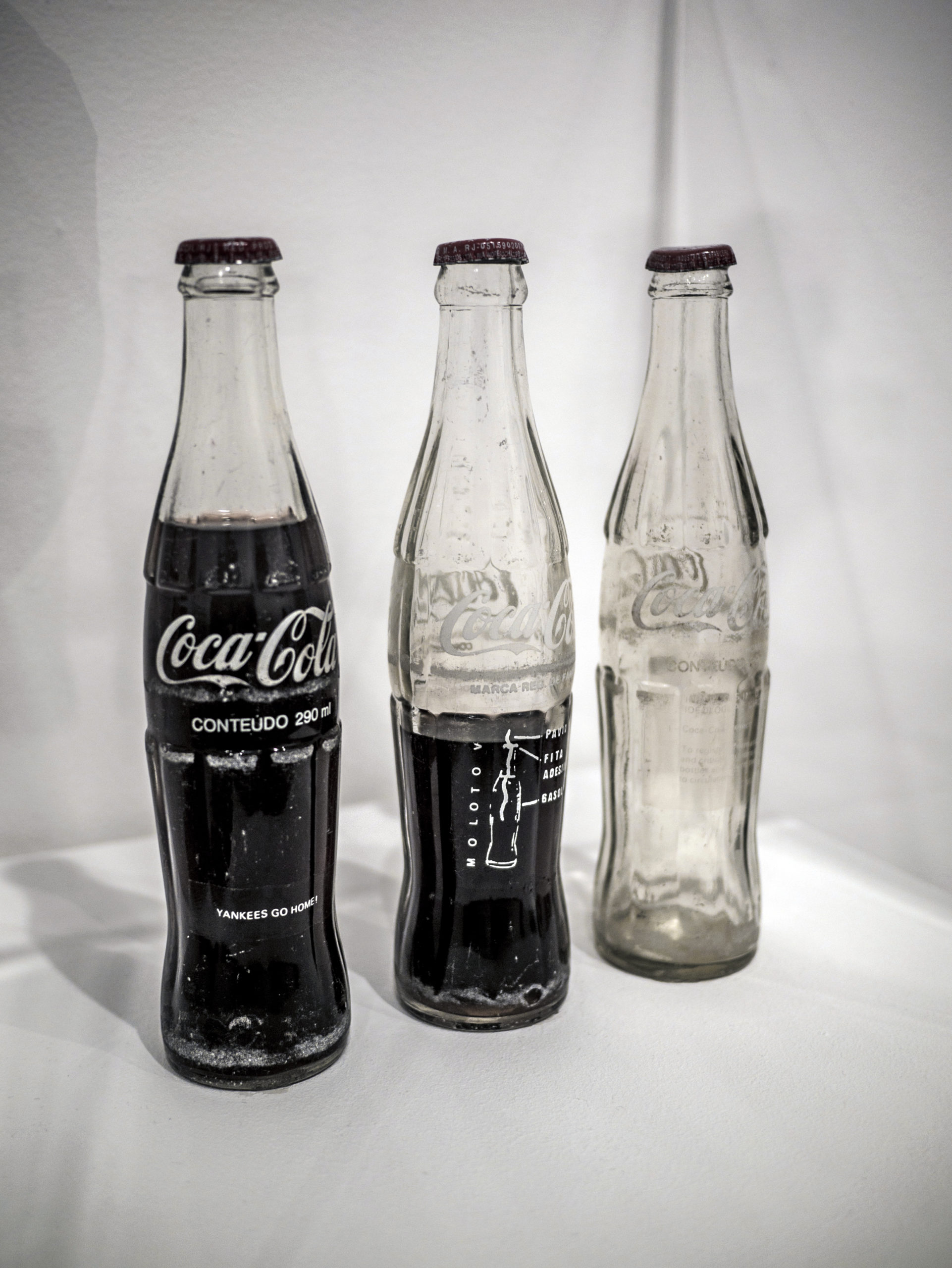
Cildo Meireles, Insertions into ideological circuits: Coca-Cola Project, 1970, 3 glass bottles, 3 metal caps, liquid and adhesive labels with text, each: 25 × 6 × 6 cm (photo: Yann Caradec, CC BY-SA 2.0)
Yet, stitched on her skin, Parente’s laborious enunciation takes on a personal aspect, as well as one that is unmistakably violent. Created at a time of governmental repression and torture, Marca registrada demonstrates that identifying one’s creative work and physical body with the name of the country becomes a painful action only accessible through a black-and-white recorded videotape.

